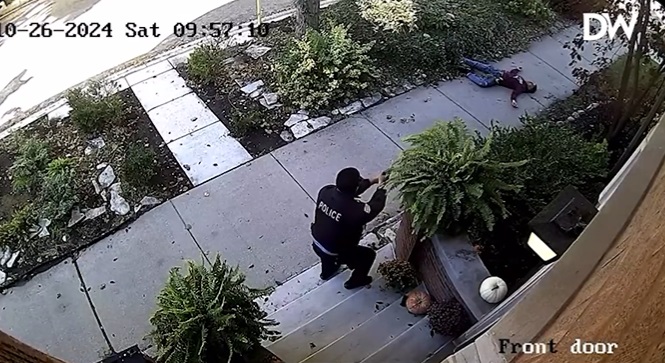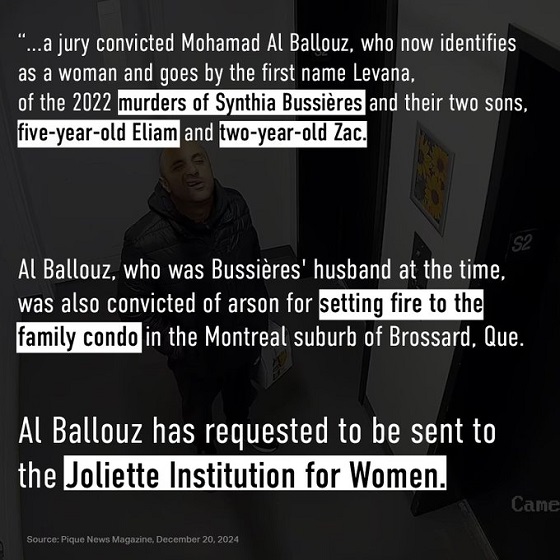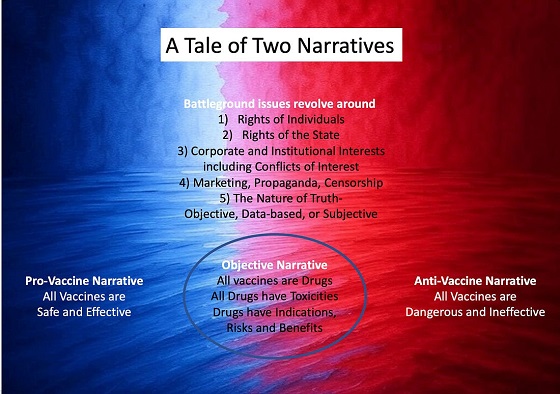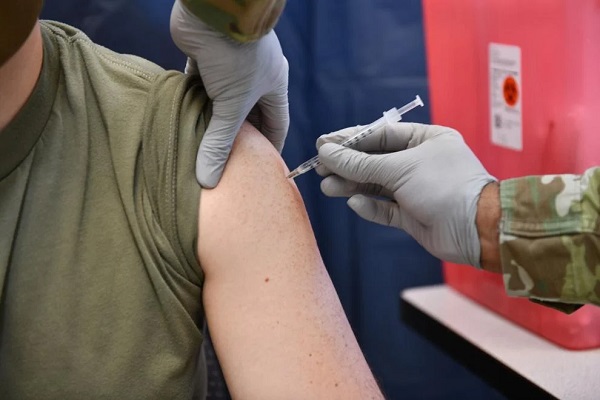Crime
The first accused Islamic terrorist to illegally cross the southern border and shoot an American for jihad

Sidi Mohammad Abdallahi shot by Chicago Police
From the Center for Immigration Studies
First Blood: Anatomy of Border-Crosser’s Chicago Terror Attack
“I can tell you the threats that come from the other side of the border are very much consuming FBI field offices, not just in border states.” – FBI Director Christopher Wray, November 2023 testimony before the House Homeland Security Committee
(Part 1 of 3)
CHICAGO, Illinois – Since October 26, 2024, was Saturday, the mandatory Jewish day of rest when the orthodox may not drive, the orthodox Jewish man woke early to walk the mile to his suburban Chicago synagogue.
But his wife and children decided to stay home, a rare exception, while he went alone to weekly morning service at KINS of West Rogers Park synagogue, the second largest synagogue in Chicago. Their choice may have been divine providence for them all, he and his wife later recounted to the Center for Immigration Studies (CIS) in late December.
Wearing religious garb – a yarmulke for his head and a clear plastic prayer shawl bag over a shoulder – that readily identified him as a Jew, the 39-year-old man headed out on the 20-minute walk through West Rogers Park, his predominantly Jewish upper-middle class suburban neighborhood where crime of any sort is virtually unknown.
He recalls “just walking, like spacing out,” nodding good morning to other walkers. Suddenly, a noise that sounded like a lightning bolt strike yanked him from the reverie.
“I like felt something hit my shoulder, and I fell,” the man recalled in a December interview at his house in his first and only interview, given to CIS on condition that identities remain undisclosed for fear of future targeting.
“I thought like some lightning crashed and hit a tree branch and that it fell on my shoulder. I wasn’t aware that the sound I heard was a gunshot.”
As he scrambled to his feet, he looked down to see a bloody hole in his suit lapel and realized his arm had gone numb. He turned in time to see a young man wearing a green workman’s safety vest – a clothing item common among pro-Hamas demonstrators worldwide – running away with a pistol in one hand, looking back at him. In that split second, the bleeding Jewish man spoke to his assailant.
“Did you just shoot me?!!?”
The assailant responded by turning around and chasing after his victim. He fired twice more to finish the job but missed. The assailant’s gun then jammed, authorities later said, giving the victim a chance to sprint for cover.
“I just ran. I thought he was still chasing me. I was screaming, ‘help!’ and just ran down the street.”
But that was just the beginning of an unprecedented life-threatening storm of violence that would go on to wrack this peaceful neighborhood for another 20 minutes in what state prosecutors would later deem a full-fledged planned terror attack. Thunderous, echoing gunfire gripped the upper middle-class residential area in white-knuckled fright, leaving shell casings strewn across streets, blood stains on sidewalks, bullet-riddled vehicles, and residents cowering with children and pets inside their homes.

Sidi Mohammad Abdallahi
“Allahu Akbar!” Sidi Mohammad Abdallahi screamed the notorious Islamic terrorist war cry as he fired, including yet a third time at his first victim.
Police would finally arrest Abdallahi, after trading fire with him and critically wounding him on a sidewalk between manicured lawns of the leafy neighborhood. Neighborhood children later found the reflective safety vest he discarded in someone’s back yard. Later, in a hospital, the Jewish victim would find himself waiting next to his terrorist assailant in triage, separated only by a thin sheet.
But unlike most Islamic terror attacks, such as the New Years Day ISIS-inspired vehicle-ramming attack by a U.S.-born citizen in New Orleans, one circumstance about the one in Chicago elevates its national security and political significance to a different plane.
The Chicago shooter – a 22-year-old Mauritanian national – had illegally crossed into the United States through Mexico in 2023 and joined some 50,000 other border-crossers who arrived in Chicago since 2022 and whose deportations under the coming Trump administration are about to become subject of a heated national political conflict.
The distinctive border-crossing aspect that made the Chicago attack possible benchmarks it as the first terror attack by a border-crossing Muslim extremist who drew blood from an American victim. And that key enabling element matters because it brings to fruition fears expressed with increasing frequency by homeland security professionals that migrants prone to act on Islamic extremist beliefs would come in on the historic mass migration tide of millions illegally crossing the Southwest border from around the world.
“I think greater fidelity about who is coming into this country and how they are getting in is essential,” FBI Director Christopher Wray testified to Congress in November 2023, when asked about terrorist border crossings nearly a year before Abdallahi’s attack. “I can tell you the threats that come from the other side of the border are very much consuming FBI field offices, not just in the border states…threats that come from the other side of the border are affecting every state, yes.”
But if seeking “greater fidelity” about how terrorists enter the country was important to Wray, the FBI oddly kept an arms-length distance from the Chicago case for reasons that no one has demanded, while quickly taking charge of the New Years attack in New Orleans and the Tesla truck bombing in front of Trump’s Las Vegas hotel.
Instead, Illinois State’s Attorney prosecutors were left to charge the wounded Abdallahi with terrorism under the state’s anti-terrorism statute after local police detectives found he methodically planned his attack on Jewish targets, inspired by Hamas’s tactics in its war on Israel and Jews. His online searches, they said, showed Abdallahi had probably planned to attack Jews as they prayed inside Chicago’s metro synagogues but opportunistically shot the Jewish man walking to one, sparing the lives of many.
Abdallahi’s online search history showed he’d researched two West Rogers Park synagogues and an area gun store. His recovered cell phone brimmed with violent jihadist, pro-Hamas, anti-Semitic murder propaganda, prosecutors and police disclosed. And there was the vest indicating solidarity with pro-Hamas demonstrators worldwide.
“This was not anything but a planned attack…an attempted assassination of these people,” Assistant State’s Attorney Anne McCord Rodgers said during Abdallahi’s arraignment on terrorism and other charges. “This was a calculated plan, on a public street…and attempted slaughter of that person and law enforcement officers.”
But the attack won’t make it to trial; nor will further details become known of the sort that, normally, the FBI, counterterrorism intelligence professionals, and elected leaders would rigorously study to prevent more attacks by those who have already illegally crossed the southern border and are here: On November 30, Abdallahi hanged himself in Cook County jail, robbing all of a potentially illuminating trial.
The prospect of lingering unanswered questions and “greater fidelity” about how this one happened prompted CIS to travel to Chicago in a quest to learn more about the attack and to emphatically remind the country that a border-crossing terrorist – a scenario often disparaged as hypothetical fantasy – has drawn first blood.
Overlooked terror attack with national security and political significance
Public and media attention to the October 26 attack quickly receded amid national preoccupation with the impending November 5 presidential election and its aftermath of Donald Trump’s victory, which was largely based on his promise to end a four-year mass migration crisis created by his predecessor. Throughout the campaign, Trump and his surrogates had often cited the terrorist infiltration national security threat posed by open-border policies he intends to reverse.
Yet the Chicago attack somehow has defied wide acknowledgement or any public sign of attendant introspection. In one of his final campaign rallies, in North Carolina on November 4, Trump did introduce the Chicago terror attack as a new justification for his plans to deport the illegal aliens who entered during the Biden-Harris border crisis of 2021-2024 in large numbers.
“Only days ago, an illegal alien from North [Africa] – and this was a rough one,” Trump began. “Just happened days ago, who Kamala Harris let into the country with her horrendous open border – just a dangerous, horrendous situation – traveled to a Jewish neighborhood in Chicago and tried to execute a Jewish man on the street, shooting him in the back as he walked to synagogue.”
Trump went on to describe the rest of the attack and drew resounding applause when he noted that Chicago police shot Abdallahi and “ended his rampage.”
No media outlet quoted Trump’s new line about the attack, which he hasn’t mentioned again.
The Abdallahi attack, however, warrants the same dedicated attention and study as all other terror attacks, for lessons and tactics used that might help authorities prevent future ones by other illegally present border-crossers from Muslim-majority countries of terrorism concern. The Border Patrol has apprehended more than 400 migrants on the FBI’s terrorism watch list since 2021, in addition to hundreds of thousands “special interest aliens” from 26 countries the U.S. deems a national security threat, according to an October 2024 House Judiciary Committee report.
Beyond FBI Director Wray’s testimony about the need for “fidelity” about terrorist travel over the border, the Chicago attack gives life to recent public U.S. intelligence community warnings about the vulnerability. In both its 2024 and 2025 annual Homeland Threat Assessments, the Biden administration’s Department of Homeland Security warned that migrants with terrorism connections and interest have and will continue to “exploit our border” amid historic mass “migration trends that complicate our ability to identify and interdict these threats.”
“Over the next year, we expect some individuals with terrorism ties … will continue their efforts to exploit migration flows and the complex border security environment to enter the United States,” the 2025 public report stated.
Beyond the chance for improved preventative measures that might detect and deport other illegal alien border-crossers from Muslim-majority nations, the Abdallahi attack warrants attention in time for an almost certain national political battle now ginning up nationwide – but with an epicenter developing in Chicago – over Trump plans to mount more aggressive interior deportations.
Democratic Chicago Mayor Brandon Johnson has repeatedly vowed to defy Trump’s deportation program and protect every illegal immigrant from ICE agents, presumably to include largely unvetted border-crossers from special interest Muslim-majority nations like Mauritania. Trump’s appointed “Border Czar” Tom Homan, who visited the city in December, swore to outmaneuver its leaders.
“The mayor of Chicago, not a real bright guy, says Tom Homan isn’t welcome to Chicago,” Homan said recently in a speech in Phoenix. “Well guess where Tom Homan’s going to be on day one? Chicago, Illinois! You don’t want me there, come get me! The people of Chicago have already spoken.”
If Chicago becomes a political epicenter for this legitimate partisan policy argument, discussion of the Mauritanian’s attack in the city would serve an obvious public interest by introducing a citable fact on the ground.
But to collect the public interest benefits of improved counterterrorism and fuller discourse about Trump’s deportation program in resistant interior cities, the public must know what happened. And as Trump described, the life-threatening attack on Jews, police, and paramedics more than qualified as “a rough one”, even though only two were injured, including the shooter, and no one died.
True terror in an attack
After he was shot through the shoulder, the Jewish man fled down the street looking for someone to let him in.
Resident Ken Boggs was just backing his car out of his driveway to go to a wedding when the wounded man suddenly pounded on his driver-side window.
“I’ve been shot!” Boggs recalled the man telling him through the closed window. “And I was like, ‘what do you mean you’ve been shot?’ I was kind of taken off guard but then he pulled his jacket open and I could see the blood and was like, ‘okay you’ve been shot.’” Boggs called 911 from inside his car but before he could act further, other neighbors across the street pulled the victim into the home of a woman who worked as a nurse, who began treating him indoors. An ambulance soon pulled up, and Chicago Fire Department paramedics began prepping him for the ride to a hospital.
None of them were safe yet.
This all occurred during what would turn out to be about a 15-minute lull in Abdallahi’s attack. Chicago police and the Illinois State Attorney’s Office declined to discuss the case, but the following account of the attack was pieced together based on police reports, witness testimony, and police body cam video released after CIS filed a Freedom of Information Act request.
After his gun jammed, Abdallahi disappeared into an alley and, rather than flee and disappear, began moving from back yard to back yard preparing to attack again.
Some 15 minutes later, when police were surveying the original crime scene for evidence and the paramedics were working on the first victim in the nurse’s home, Abdallahi was in Malka Reich’s backyard preparing to attack them all. An Orthodox Jewish homemaker and mother of four, Reich was home alone that day with her youngest, a baby. She’d been reading upstairs near a window while the baby slept, heard the initial shots just outside a quarter block away and heard the victim screaming for help. She looked outside and saw the gunman running.
Once the police arrived a few minutes later, curious neighbors began to venture outside.
“Women were pushing strollers, like life was back to normal,” she said.
Reich’s doorbell camera videotaped her a few minutes into the ensuing lull stepping out on her front porch – a large Israeli flag hanging from it next to an American flag and identifying her home as Jewish — to ask a dog-walking neighbor on her lawn if he wanted to take shelter inside. The neighbor declined and walked toward where police were taping off the crime scene and gathering evidence.
But seconds later, she saw through the doorway Abdallahi suddenly appear exiting her very own driveway from her backyard, gripping his pistol in his right hand. Her door camera videotaped it.
Extreme fright overtook her.
“This is a terrorist on my property.” Reich recalled thinking. “When he came back, I realized that this was terrorism. I needed to take this seriously. I felt like I needed to protect my baby.”
She saw Abdallahi turn left from her driveway on the sidewalk, raise his gun, and trot toward the police officers and the dog walker. Her doorbell camera clearly captured Abdallahi shouting “Allahu Akbar” and then he fired, she said, on the dog-walking neighbor to whom she’d just offered shelter. Next came dozens of deafening gunshots as Abdallahi opened fire on the officers, and they returned it amid much unintelligible shouting and screaming.
An Orthodox Jew well-schooled in the October 7, 2023, Hamas attack that butchered 1,200 Israelis in and around their own homes, Reich’s thoughts raced straight to “This is like October 7. How am I going to save my baby?”
She grabbed a kitchen knife and retreated with the child to a back bedroom to hide behind furniture as the gun battle raged outside. But she was tormented by second guessing if this was the correct tactical move.
Maybe a better move, she thought, clutching the knife, would be to hide the child in the attic so that the terrorists would go after her instead. Maybe she could open a window upstairs and leap when they came in like some Israelis did. Except that she knew Hamas terrorists shot and burned others who’d also tried that escape.
“You’re thinking, ‘so many people tried to survive in so many different ways’” during the October 7 massacre, she recalled. “Some people hiding got burned alive. Some people hid and survived. Some people jumped out of a window and got shot. And you just wonder what do you do in this situation?”
Non-Jewish neighbors also went into survival mode when they heard and saw the confusing gun battle between police and Abdallahi, whom they saw fire, then retreat and pop out elsewhere to start firing again.
“It was terrifying. It was just terrifying,” recalled another woman who requested anonymity. After that first lull ended and new shooting began, she grabbed their 7-year-old daughter and hid with her husband in the bedroom furthest from the street.
“The shooting was just constant. It was a volley, back and forth, back and forth. You didn’t know where it was, where it was moving to, where the shots were being directed. We heard lots of yelling. The police were yelling.”
An elderly woman retiree who lives across the street from the Reich family said she opened her front door during the lull and spotted Abdallahi standing facing the other way wearing “this very bright vest” and holding a gun, probably on the Reich property.
“I saw him run that way, and I don’t know anything more except the gunshots started and I hid on my bathroom floor with my dog,” said the woman who declined to identify herself. “The police were firing in this direction. I know my neighbor has a bullet in the back of his car.”
In all, the second phase of the attack lasted nearly four minutes. Five police officers took fire and fired back, police reports and released body cam video show.

Sidi Mohammad Abdallahi shot by police
The Chicago Police Department declined CIS requests to interview any of the officers or to speak about them or the case, as did a spokesman for the Fraternal Order of Police association.
Doorbell camera video shows one of the officers, from behind the brick cover of a porch stoop, shooting Abdallahi down as the gunman moved toward him on a sidewalk, just feet away. Other body cam video released December 19 in response to a CIS open records request shows highly stressed officers with weapons raised advancing on Abdallahi, yelling at him to put down his weapon and firing.
Abdallahi did not just fire on police. He went for his original victim a third time as two Chicago Fire Department paramedics were loading him onto Ambulance 13. A video shows the gunman firing at it as it raced past him with sirens blaring. Firefighters at the station where Ambulance 13 is assigned refused a CIS interview request.
The victim, whom neighbors had taken into their home for field treatment, recalled that paramedics who showed up to help had him on a gurney and were loading into the ambulance when gunfire raked them all. Rounds were hitting the ambulance.
“The paramedics were like, ‘did they shoot at the ambulance?’ They [the paramedics] told me to duck but there was nowhere to duck,” the shooting victim said, noting that he couldn’t duck being on a gurney. “They were scared. The paramedics were absolutely scared. They were like, this has never happened. They, like, didn’t know what to do. They’re like, let’s just get out of here! Let’s go!”
Door camera video shows the gunman continued firing at the ambulance as it sped down the street past him. In the moment, he was unaware that rounds had hit the vehicle.
After about four minutes, police finally were finally able to shoot Abdallahi down, although he continued to rise and point his gun until he simply no longer could.
From her living room windows, one woman videotaped a police officer just outside on the sidewalk feet away, gun drawn and pointed, shouting and advancing on Abdallahi and then Abdallahi himself.
“They just shot some guy right in front of our house,” she said, before moving to another window and seeing Abdallahi. “My God, there are police everywhere.”
“huuuuhh! Oh my God. Oh my God. Oh my God. What the hell,” was all the woman could muster as she trained her camera through the window down onto Abdallahi sprawled out on her sidewalk. A man’s voice beside her said “Oh shit. He’s dead.”
He wasn’t, of course, not yet. But he would soon hang himself in jail, an incident about which virtually nothing is publicly known.
Aftermath
The bullet had gone clean through the victim’s shoulder blade, tore some nerves and clipped his clavicle. There’d been a lot of blood. But two months later, the man reported full use of the numbed arm and that he was feeling physically fine.
A week after the terror attack, he decided to walk to synagogue again. More than 200 people joined him along the way in a show of defiant support, ringed by state and local police.

Chicago Rabbi Leonard Matanky
In part because Chicago had become a hotbed of pro-Hamas, anti-Israel demonstrations, a brief controversy rose and fell when the Jewish community noticed that politically liberal state and local officials in line with demonstrators downplayed the attack and omitted the fact that a Muslim extremist had attacked a Jewish neighborhood out of terroristic animus. The spat was largely resolved when state officials added the terrorism charges.
But there was no denying that Abdallahi’s wild melee shook Chicago’s Orthodox Jewish community, which already had security measures in place against anti-semitic mischief related to the war in Gaza, Rabbi Leonard Matanky of Congregation KINS told CIS.
“A person who I care about was hurt. A family had to endure a trauma that they shouldn’t have had to endure, and a community was made to feel unsafe,” he said, inside a Jewish day school that flies a large Israeli flag outside. “Can a person be shot now? It’s shifted a sense of what’s within the realm of possibility in my world. Just as October 7th was a global shift on Jews in the world, this was a shift on the Jewish community in the city of Chicago.”
Few in the community seem more hostile about illegal immigration now than before the attack, Rabbi Matanky indicated, even though it clearly played a role on October 26 and could again at any time. That’s in part because of a long history when Jews around the world had to emigrate away from various persecutions.
But Matanky also said he personally supported Border Czar Tom Homan’s plan to rid Chicago of illegal criminal aliens.
“I would hope that the law enforcement government would be able to get all of the criminals out of every community.”
And Abdallahi’s suicide in jail has left him with a great many questions about how and why he was able to cross the southern border.
“Why did he come to Chicago? How did he come to Chicago. What was his goal in coming to Chicago? Was it to find a Jew and kill him?”
Next: What we know and don’t know about Abdallahi.
Business
Closing information gaps to strengthen Canada’s border security and track fentanyl

By Sean Parker, Dawn Jutla, and Peter Copeland for Inside Policy
To promote better results, we lay out a collaborative approach
Despite exaggerated claims about how much fentanyl is trafficked across the border from Canada to the United States, the reality is that our detection, search, and seizure capacity is extremely limited.
We’re dealing with a “known unknown”: a risk we’re aware of, but don’t yet have the capacity to understand its extent.
What’s more, it may be that the flow of precursor chemicals—ingredients used in the production of fentanyl—is where much of the concern lies. Until we enhance our tracking, search, and seizure capacity, much will remain speculative.
As border security is further scrutinized, and the extent of fentanyl production and trafficking gets brought into sharper focus, the role of the federal government’s Precursor Chemical Risk Management Unit (PCRMU)—announced recently by Health Canada—will become apparent.
Ottawa recently took action to enhance the capabilities of the PCRMU. It says the new unit will “provide better insights into precursor chemicals, distribution channels, and enhanced monitoring and surveillance to enable timely law enforcement action.” The big question is, how will the PCRMU track the precursor drugs entering into Canada that are used to produce fentanyl?
Key players in the import-export ecosystem do not have the right regulatory framework and responsibilities to track and share information, detect suspect activities, and be incentivized to act on it. That’s one of the reasons why we know so little about how much fentanyl is produced and trafficked.
Without proper collaboration with industry, law enforcement, and financial institutions, these tracking efforts are doomed to fail. To promote better results, we lay out a collaborative approach that distributes responsibilities and retools incentives. These measures would enhance information collection capabilities, incentivize system actors to compliance, and better equip law enforcement and border security services for the safety of Canadians.
Trade-off bottleneck: addressing the costs of enhanced screening
To date, it’s been challenging to increase our ability to detect, search, and seize illegal goods trafficked through ports and border crossings. This is due to trade-offs between heightened manual search and seizure efforts at ports of entry, and the economic impacts of these efforts.
In 2024, the Canada Border Services Agency (CBSA) admitted over 93 million travelers. Meanwhile, 5.3 million trucks transported commercial goods into Canada, around 3.6 million shipments arrived via air cargo, nearly 2 million containers were processed at Canadian ports, roughly 1.9 million rail cars carried goods into the country, and about 145.7 million courier shipments crossed the border. The CBSA employs a risk-based approach to border security, utilizing intelligence, behavioral analysis, and random selection to identify individuals or shipments that may warrant additional scrutiny. This triaging process aims to balance effective enforcement with the facilitation of legitimate travel and trade.
Exact percentages of travelers subjected to secondary inspections are not publicly disclosed, but it’s understood that only a small fraction undergo such scrutiny. We don’t learn about the prevalence of these issues through our border screening measures, but in crime reporting data—after it’s too late to avert.
It’s key to have an approach that minimizes time and personnel resources deployed at points of entry. To be effective without being economically disruptive, policymakers, law enforcement, and border security need to strengthen requirements for information gathering, live tracking, and sharing. Legislative and regulatory change to require additional information of buyers and sellers—along with stringent penalties to enforce non-compliance—is a low-cost, logistically efficient way of distributing responsibility for this complex and multifaceted issue. A key concept explored in this paper is strengthening governance controls (“controls”) over fentanyl supply chains through new processes and data digitization, which could aid the PCRMU in their strategic objectives.
Enhanced supply chain controls are needed
When it comes to detailed supply chain knowledge of fentanyl precursor chemicals moving in and out of Canada, regulator knowledge is limited.
That’s why regulatory reform is the backbone of change. It’s necessary to ensure that strategic objectives are met by all accountable stakeholders to protect the supply chain and identify issues. To rectify the issues, solutions can be taken by the PCRMU to obtain and govern a modern fentanyl traceability system/platform (“platform”) that would provide live transparency to regulators.
A fresh set of supply chain controls, integrated into a platform as shown in Fig. 1, could significantly aid the PCRMU in identifying suspicious activities and prioritizing investigations.

Our described system has two distinctive streams: one which leverages a combination of physical controls such as package tampering and altered documentation against a second stream that looks at payment counterparties. Customs agencies, transporters, receivers, and financial institutions would have a hand in ensuring that controls in the platform are working. The platform includes several embedded controls to enhance supply chain oversight. It uses commercially available Vision AI to assess packaging and blockchain cryptography to verify shipment documentation integrity. Shipment weight and quantity are tracked from source to destination to detect diversion, while a four-eyes verification process ensures independent reconciliation by the seller, customs, and receiver. Additionally, payment details are linked to shipments to uncover suspicious financial activity and support investigations by financial institutions and regulators like FINTRAC and FINCEN.
A modern platform securely distributes responsibility in a way that’s cost effective and efficient so as not to overburden any one actor. It also ensures that companies of all sizes can participate, and protects them from exploitation by criminals and reputational damage.
In addition to these technological enhancements and more robust system controls, better collaboration between the key players in the fentanyl supply chain is needed, along with policy changes to incentivize each key fentanyl supply chain stakeholder to adopt the new controls.
Canadian financial institutions: a chance for further scrutiny
Financial institutions (FIs) are usually the first point of contact when a payment is being made by a purchaser to a supplier for precursor chemicals that could be used in the production of fentanyl. It is crucial that they enhance their screening and security processes.
Chemicals may be purchased by wires or via import letters of credit. The latter is the more likely of the two instruments to be used because this ensures that the terms and conditions in the letter of credit are met with proof of shipment prior to payment being released. Payments via wire require less transparency.
Where a buyer pays for precursor chemicals with a wire, it should result in further scrutiny by the financial institution. Requests for supporting documentation including terms and conditions, along with proof of shipment and receipt, should be provided. Under new regulatory policy, buyers would be required to place such supporting documentation on the shared platform.
The less transparent a payment channel is in relation to the supply chain, the more concerning it should be from a risk point of view. Certain payment channels may be leveraged to further mask illicit activity throughout the supply chain. At the onset of the relationship the seller and buyers would link payment information on the platform (payment channel, recipient name, recipient’s bank, date, and payment amount) to each precursor or fentanyl shipment. The supplier, in turn, should record match payment information (payment channel, supplier name, supplier’s bank, date, and payment amount).
Linking payment to physical shipment would enable data analytics to detect irregularities. An irregularity is flagged when the amounts and/or volume of payments far exceed the value of the received goods or vice versa. The system would be able to understand which fentanyl supply chains tend to use a particular set of FIs. This makes it possible to conduct real-time mapping of companies, their fentanyl and precursor shipments and receipts, and the payment institutions they use. With this bigger picture, FIs and law enforcement could connect the dots faster.
Live traceability reporting
Today, suppliers of fentanyl precursors are subject to the Pre-Export Notification Online (PEN Online) database. This database enables governments to monitor international trade in precursor chemicals by sending and receiving pre-export notifications. The system helps prevent the diversion of chemicals used in the illicit manufacture of drugs by allowing authorities to verify the legitimacy of shipments before they occur.
To further strengthen oversight, the platform utilizes immutability technologies—such as blockchain or secure immutable databases—which can be employed to encrypt all shipping documents and securely share them. This presents an auditable form of chain-of-custody and makes any alterations apparent. Customs and buyers would have the capability to verify the authenticity of the originating documents in a way that doesn’t compromise business confidentiality. With the use of these technologies, law enforcement can narrow down their investigations.
An information gap currently exists as the receivers of the shipments don’t share their receipts information with PEN. To strengthen governance on fentanyl supply chains, regulatory policy and legislative changes are needed. The private sector should be mandated to report received quantities of fentanyl or its precursors, as well as suspicious receiving destinations. This could be accomplished on the platform which would embed the receiving process, a reconciliation process of the transaction, the secure upload and sharing of documents, and would be minimally disruptive to business processes.
Additionally, geo-location technology embedded in mobile devices and/or shipments would provide real-time location-based tracking of custody transactions. These geo-controls would ensure accountability across the fentanyl supply chain, in particular where shipments veer off or stop too long on regular shipping routes. Canadian transporters of fentanyl and its precursor chemicals should play an important role in detecting illicit diversion/activities.
Digital labelling
Licensed fentanyl manufacturers could add new unique digital labels to their shipments to get expedited clearance. For example, immutable digital labelling platforms enable tamper-proof digital labels for legitimate fentanyl shipments. This would give pharmacies, doctors, and regulators transparency into the fentanyl’s:
- Chemical composition and concentrations (determining legitimate vs. adulterated versions of the drug)
- Manufacturing facility ID, batch ID, and regulatory compliance status
- Intended buyer authentication (such as licensed pharmaceutical firms or distributors)
Immutable digital labelling platforms offer secure role-based access control. They can display customized data views according to time of day, language, and location. Digital labels could enable international border agencies and law enforcement to receive usable data, allowing legal shipments through faster while triggering closer shipment examinations for those without of a digital label.
International and domestic transporter controls
Transporters act as intermediaries in the supply chain. Their operations could be monitored through a regulatory policy that mandates their participation in the platform for fentanyl and precursor shipments. The platform would support a mobile app interface for participants on-the-move, as well as a web portal and application programming interfaces (APIs) for large-size supply chain participants. Secure scanning of packaging at multiple checkpoints, combined with real-time tracking, would provide an additional layer of protection against fraud, truckers taking bribes, and unauthorized alterations to shipments and documents.
Regulators and law enforcement participation
Technology-based fentanyl controls for suppliers, buyers, and transporters may be reinforced by international customs and law enforcement collaboration on the platform. Both CBSA and law enforcement could log in and view alerts about suspicious activities issued from the FIs, transporters, or receivers. The reporting would allow government personnel to view a breakdown of fentanyl importers, the number of import permit applications, and the amount of fentanyl and its precursors flowing into the country. Responsible regulatory agencies—such as the CBSA and PCRMU—could leverage the reporting to identify hot spots.
The platform would use machine learning to support CBSA personnel in processing an incoming fentanyl or precursor shipment. Machine learning refers to AI algorithms and systems that improve their knowledge with experience. For example, an AI assistant on the traceability system could use machine learning to predict and communicate which import shipments arriving at the border should be passed. It can base these suggestions on criteria like volume, price, origin of raw materials, and origin of material at import point. It can also leverage data from other sources such as buyers, sellers, and banks to make predictions. As an outcome, the shipment may be recommended to pass, flagged as suspicious, or deemed to require an investigation by CBSA.
It’s necessary to keep up to date on new precursor chemicals as the drug is reformulated. Here, Health Canada can play a role, using its new labs and tests—expected as part of the recently announced Canadian Drug Analysis Centre—to provide chemical analysis of seized fentanyl. This would inform which additional chemical supply chains should be tracked in the PCRMU’s collaborative platform, and all stakeholders would widen their scope of review.
These new tools would complement existing cross-border initiatives, including joint U.S.-Canada and U.S.-Mexico crackdowns on illicit drug labs, as well as sovereign efforts. They have the potential to play a vital role in addressing fentanyl trafficking.
A robust, multi-pronged strategy—integrating existing safeguards with a new PCRMU traceability platform—could significantly disrupt the illegal production and distribution of fentanyl. By tracking critical supply chain events and authenticating shipment data, the platform would equip law enforcement and border agencies in Canada, the U.S., and Mexico with timely, actionable intelligence. The human toll demands urgency: from 2017 to 2022, the U.S. averaged 80,000 opioid-related deaths annually, while Canada saw roughly 5,500 per year from 2016 to 2024. In just the first nine months of 2024, Canadian emergency services responded to 28,813 opioid-related overdoses.
Combating this crisis requires more than enforcement. It demands enforceable transparency. Strengthened governance—powered by advanced traceability technology and coordinated public-private collaboration—is essential. This paper outlines key digital controls that can be implemented by global suppliers, Canadian buyers, transporters, customs, and financial institutions. With federal leadership, Canada can spearhead the adoption of proven, homegrown technologies to secure fentanyl supply chains and save lives.
Sean Parker is a compliance leader with well over a decade of experience in financial crime compliance, and a contributor to the Macdonald-Laurier Institute.
Dawn Jutla is the CEO of Peer Ledger, the maker of a traceability platform that embeds new control processes on supply chains, and a professor at the Sobey School of Business.
Peter Copeland is deputy director of domestic policy at the Macdonald-Laurier Institute.
2025 Federal Election
‘Sadistic’ Canadian murderer claiming to be woman denied transfer to female prison

From LifeSiteNews
The logical decision to house the male murderer with men flies in the face of the Liberal Party’s official stance, which is to incarcerate prisoners according to their ‘self-identified’ gender.
A Canadian man who butchered his family and now claims to be a woman will not be allowed to transfer to a female prison.
On April 8, Correctional Services Canada (CSC) announced that Mohamad Al Ballouz, who brutally murdered his wife and two children, will be sent to a men’s prison, despite claiming to be a woman, according to CTV News.
“When there are overriding health and safety concerns, the request is denied and alternatives are put in place to meet the offender’s gender‑related needs at the institution where they are incarcerated,” the CSC statement reads.
Following an assessment of Al Ballouz request, CSC confirmed that he “will be incarcerated in a men’s institution.”
On December 16, Al Ballouz, a 38-year-old from Quebec, was found guilty second-degree murder of his wife Synthia Bussières, first-degree murder of five-year-old Eliam and two-year-old Zac, and one count of attempted arson.
Crown prosecutor Éric Nadeau revealed that the murder took place in September 2022 when Al Ballouz slaughtered his family at their Brossard apartment. He stabbed his wife 23 times before suffocated his children and trying to set the apartment on fire. He then ingested windshield washer fluid, which is believed to have been a suicide attempt.
During the trial, Quebec Superior Justice Eric Downs described Al Ballouz, as having a “sadistic character” and being “deeply narcissistic.” He was sentenced to life imprisonment with no chance of parole for 25 years.
Throughout the trial, Al Ballouz, a biological male, claimed to be a woman and demanded that he be referred to as “Levana,” a change which was made after he was charged for his crimes. Notably, the Canadian Broadcasting Report’s (CBC’s) report of the case refers to the convicted murder as “she” and uses his fake name.
Following his sentencing, the murderer requested to be sent to the Joliette Institution for Women; however, Downs responded that is a decision for Correctional Service Canada.
Currently under the Liberal Party, the policy is to place prisoners according to their “self-identified” gender, not according to biology. As a result, male rapists and murderers can be sent to prison with females.
However, Al Ballouz’s case caused an uproar on social media as many pointed out that putting the murderer in a women’s prison would pose a danger to female inmates.
Conservative Party leader Pierre Poilievre has condemned the Liberal policy and promised that he would end this practice if elected.
“Surreal: A man who killed his wife and two kids now claims he is a woman to go to a female prison,” he wrote in a December 22 post on X.
“I can’t believe I have to say this: but when I’m PM, there will be no male prisoners in female jails,” Poilievre continued. “Period.”
-

 2025 Federal Election2 days ago
2025 Federal Election2 days agoNo Matter The Winner – My Canada Is Gone
-

 2025 Federal Election2 days ago
2025 Federal Election2 days agoASK YOURSELF! – Can Canada Endure, or Afford the Economic Stagnation of Carney’s Costly Climate Vision?
-

 Alberta2 days ago
Alberta2 days agoProvince to expand services provided by Alberta Sheriffs: New policing option for municipalities
-

 Alberta2 days ago
Alberta2 days agoMade in Alberta! Province makes it easier to support local products with Buy Local program
-

 2025 Federal Election2 days ago
2025 Federal Election2 days agoCSIS Warned Beijing Would Brand Conservatives as Trumpian. Now Carney’s Campaign Is Doing It.
-

 2025 Federal Election2 days ago
2025 Federal Election2 days agoInside Buttongate: How the Liberal Swamp Tried to Smear the Conservative Movement — and Got Exposed
-

 Bruce Dowbiggin1 day ago
Bruce Dowbiggin1 day agoIs HNIC Ready For The Winnipeg Jets To Be Canada’s Heroes?
-

 Dr. Robert Malone1 day ago
Dr. Robert Malone1 day agoThe West Texas Measles Outbreak as a Societal and Political Mirror






